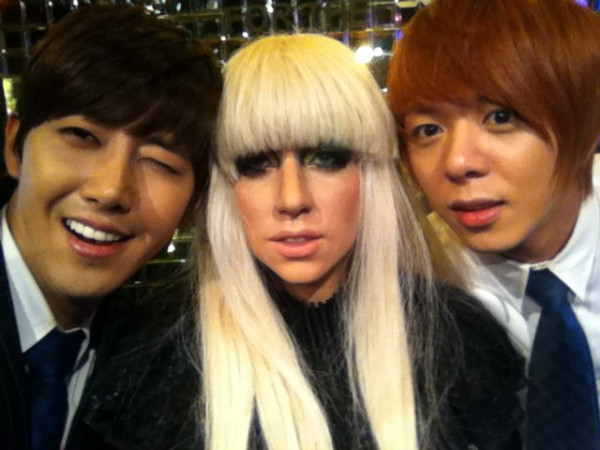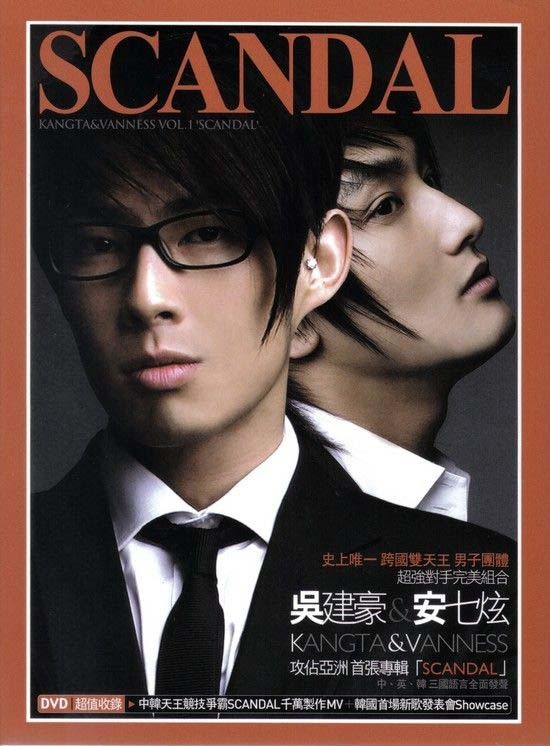 Welcome to another Seoulbeats Roundtable!
Welcome to another Seoulbeats Roundtable!
As much as people compare the kind of music heard in K-pop to that heard in the US pop music scene, there is no denying that the way K-pop is made, distributed, promoted and sold is definitely different. Comeback stages, triple crowns and all-kills, along with the less savoury elements of buybacks, slave contracts and poor event management all make the K-pop industry different from other music and entertainment industries–but that doesn’t mean that parallels can’t be drawn, either. Just as how each music industry around the world has its own unique points, they will also have some things in common.
The question put to our multi-cultural authorship this week was:
How does the K-pop industry differ from that in your own area? And, are there also similarities to be found?
Maria: The first difference I can spot is the fact all K-pop songs have a distinct flavor that makes you tell in a second what genre it belongs to. K-pop operates as a music genre and usually fans are drown in by a combo of artists and songs that attract them to the music scene as a whole, not only to a particular singer or group. When I got into it, I remember it happened somewhere between DBSK’s “Mirotic,” Boys Before Flowers, Son Dam-bi’s “Invisible Person,” 2NE1 & Big Bang’s “Lollipop” and Gummy’s “There Is No Love.” I had a taste of pretty different things and I haven’t been stuck with a bias for most of the time, oscillating weekly between idols. Because of this common and somewhat unidentifiable characteristic that links K-pop songs in the same genre, the music scene affords such a solid and devoted fandom.
The music scene in my country is the complete opposite (this is a subjective point of view): we have famous artists, but none that really sticks out, like a SNSD or a Super Junior to make all the fans go nuts over their new releases. Techno music, with all its subgenres, is the thing, but there’s not much that cries Romanian when you hear a song like this. Most of Inna’s fans probably don’t know where she comes from. Groups don’t get much flack, but they’re not predominant either and music shows like Inkigayo or Music Core don’t exist. Here’s an example.
A similarity I can think of consists in the chances “Rookies” get. EDM is a welcoming genre where the rhythm counts more than the artist, so you don’t have to be an established singer for your songs to get some airplay. Another resemblance would be the existence of variety shows. They’re not called like that and the celebrities change each episode, but their format is somewhat similar.
Paloma: Well, the Korean music industry relies pretty heavily in the idol system, so that’s basically the main difference with the music scene here in Europe — although not every European country is the same, as Maria is European as well and I can clearly see it’s not the same in our countries. For most of the part, I would even say the mainstream scene is quite opposite: here the bands and the soloist are the trend, while we don’t have anything similar to dance groups. Recently a girl from the Spanish version of X Factor, who not long ago starred in a quite successful TV series for teens, started appearing in different varieties, and I remember someone telling me she was the most similar thing we had to an idol here. And thinking about it, she is nothing like an idol:  she wasn’t trained by her company, and I highly doubt her record company manages her career as an actress too; besides, she isn’t idolized. She is famous, people likes her, but she hasn’t become an icon in any way. Yet she is probably the most similar thing we have to an idol.
she wasn’t trained by her company, and I highly doubt her record company manages her career as an actress too; besides, she isn’t idolized. She is famous, people likes her, but she hasn’t become an icon in any way. Yet she is probably the most similar thing we have to an idol.
I guess it’s somehow like what Maria said: some artists are well-known and whatnot, but they mainly remain in a moderate level of fame. I can’t picture any group being called ‘Spain’s national group’ just like SNSD is supposed to be ‘Korea’s national girl group’ (maybe also because we don’t use titles like that, or ‘Spain’s little sister’ or ‘Spain’s first love… that would be just weird). And although the idol culture is very characteristic of East-Asian countries, I can still see some similarities with how singers are treated in the American culture, like Britney Spears, Beyoncé or Lady Gaga; we have nothing like that here (well, we have every single American artist being promoted here too), singers are singers and rarely entertainers.
I also just noticed that I can name most Korean entertainment agencies and some of their CEOs and I can’t name any single Spanish one. I guess that says a lot about the way music is marketed here and there.
If I were to look for similarities, I guess I would find them more in the indie scene. Because most of the mainstream popular artists do either some sort of pop rock or pop with Latin influences, the musical style isn’t that similar to idol’s typical dance-pop; yet when you look at the indie scene, you can find some similarities in their styles and they way they are marketed (all the festivals circuit).
Gaya: I’m the same regarding companies as well, Paloma: I never took notice of labels and agencies before K-pop.
 I know other writers will be able to cover the Western music markets, so I’ll talk instead about the Indian music scene(s). To put it simply, it’s ruled by film music: it dominates the charts, and the songs are a big factor in the success or failure of the films themselves. A cursory glance at any kind of music chart in any of the multiple music industries in India (segregated along lingual lines) will turn up mostly film songs. There are more and more “album artists” turning up as well, and a lot of the playback singers who are heard on OSTs release their own albums, but film music still remains the mainstay of mainstream Indian music. Funnily enough, that is one similarity I can identify with Korea’s own industry, where OSTs are a big part of the Korean and Indian music markets. Though for Korea it’s drama OSTs and for India it’s film, soundtrack songs are very popular and more prominent than they would be in the West. Another commonality I’ve just realised is the practice of singing in different languages: K-pop stars are releasing music in Japanese, Mandarin and English in increasing numbers, and Indian singers also sing in different languages–which means that poor pronunciation can also be seen in both industries.
I know other writers will be able to cover the Western music markets, so I’ll talk instead about the Indian music scene(s). To put it simply, it’s ruled by film music: it dominates the charts, and the songs are a big factor in the success or failure of the films themselves. A cursory glance at any kind of music chart in any of the multiple music industries in India (segregated along lingual lines) will turn up mostly film songs. There are more and more “album artists” turning up as well, and a lot of the playback singers who are heard on OSTs release their own albums, but film music still remains the mainstay of mainstream Indian music. Funnily enough, that is one similarity I can identify with Korea’s own industry, where OSTs are a big part of the Korean and Indian music markets. Though for Korea it’s drama OSTs and for India it’s film, soundtrack songs are very popular and more prominent than they would be in the West. Another commonality I’ve just realised is the practice of singing in different languages: K-pop stars are releasing music in Japanese, Mandarin and English in increasing numbers, and Indian singers also sing in different languages–which means that poor pronunciation can also be seen in both industries.
In fact, it seems that the similarities between the Korean and multiple Indian music industries interest me more than the differences, because I was not expecting any of the former–they are just so different to begin with.
Fatouma: Seeing as I’m the Canadian on the team, I’ll talk about Canada’s music industry to the best of my ability (holla to all the Canadian readers!) When it comes to mainstream music and entertainment in general, Canada more or less just absorbs whatever is churning out from the US, seeing as we’re close neighbours. Since the 1920’s it seems, most aspiring Canadian artists seem to be more likely to move to the United States in order to pursue acting and singing careers. I can’t count how many times I was surprised to learn that some of the popular celebrities in Hollywood are Canadian like Jim Carrey, Ryan Reyonlds, Ryan Gosling, Rachel McAdams, Christopher Fricking Plummer, to name a couple.
 It always seems like Canadian entertainment has been under the shadow of American entertainment, heck, I think Canada is always overshadowed by the US for everything. It’s tough living next to a superpower, but we manage, who is so good at expanding their own pop culture, despite the obvious brain drain. There are stations like the CBC that mostly airs purely Canadian content, but most of it is not very good, except for Little Mosque On The Prairie, which IS a show and is EXCELLENT. With music, we have lot of indie bands, that I feel that only hipsters and old people listen to here, and everything else is predominantly from south of the border. Except for Justin Bieber, Carly Rae Jepsen, who I remember watching on Canadian Idol in the early 2000s, in which she won second place, and Drake, who starred in Degrassi. As much as I like that those three Canadian artists are getting a lot of coverage, their success does nothing for Canada, on the cultural and economical side. We’ll still be associated with igloos, maple syrup, moose, and being overly polite, (some Americans should really visit Toronto, or me) and not for producing successful artists.
It always seems like Canadian entertainment has been under the shadow of American entertainment, heck, I think Canada is always overshadowed by the US for everything. It’s tough living next to a superpower, but we manage, who is so good at expanding their own pop culture, despite the obvious brain drain. There are stations like the CBC that mostly airs purely Canadian content, but most of it is not very good, except for Little Mosque On The Prairie, which IS a show and is EXCELLENT. With music, we have lot of indie bands, that I feel that only hipsters and old people listen to here, and everything else is predominantly from south of the border. Except for Justin Bieber, Carly Rae Jepsen, who I remember watching on Canadian Idol in the early 2000s, in which she won second place, and Drake, who starred in Degrassi. As much as I like that those three Canadian artists are getting a lot of coverage, their success does nothing for Canada, on the cultural and economical side. We’ll still be associated with igloos, maple syrup, moose, and being overly polite, (some Americans should really visit Toronto, or me) and not for producing successful artists.
However, Canada still tries their best, by content still being produced, and celebrations like the Junos and Genies, the Canadian equivalents of the Grammys and Oscars respectively, despite any real homegrown attention for most of the music other than Canadian artists that work in the US. I feel that there is a lot of second-best mentality in Canada, when it comes to our entertainment industry, with its inhabitants viewing the industry as ‘cute’, but nowhere near the production or quality as a movie from Hollywood. I mean, Incendies, a superb movie by Canadian filmmaker, David Villeneuve, could be excel in both of these things, but the mainstream wouldn’t think any of it, and would watch an Adam Sandler movie instead.
 Maryse: From where I’m at in Asia, it’s a good mix of solo and groups with the likes of Jay Chou, Jolin Tsai, Show Luo, S.H.E, Fahrenheit, Mayday and more dominating the Asian music market. C-pop has been pretty dominant in Asia throughout the years, and even up till date the ground has been filled pretty evenly with solo acts and groups alike.
Maryse: From where I’m at in Asia, it’s a good mix of solo and groups with the likes of Jay Chou, Jolin Tsai, Show Luo, S.H.E, Fahrenheit, Mayday and more dominating the Asian music market. C-pop has been pretty dominant in Asia throughout the years, and even up till date the ground has been filled pretty evenly with solo acts and groups alike.
But since K-pop got popular, some acts in Asia have started trying to emulate what K-pop’s been doing. They’ve been combining dance with repetitive beats in the song, along with “copying” the same looks K-pop artists have (thick make up eyeliner on men), which was never evident in their previous works. They think that it’s a successful formula since K-pop has been doing it so well. However I’m glad to say that most of the old timers in Asian music (C-pop in general) still stayed true to their style of music. It’s probably mostly the new acts who have been trying to emulate after K-pop.
Gaya: Australia’s music market is pretty much the same as that of other western societies,but he only thing different would be that there are less opportunities for televised performances, which is definitely a big point of difference with K-pop. We haven’t had a proper late night talk show since Rove, so live performances are limited to breakfast shows and singing contests, with the odd interview on either a current affairs or light news program. Radio plays a much bigger part of music promotion, where there are more interviews with artists, as well as even live sets. This all applies to free-to-air networks, though; pay TV might have more interaction with musicians with their music channels–though those tend to be stuffed with reality shows more than actual music. Contrast that with the weekly music shows in Korea, which, while hectic for the idols themselves, really provide extra opportunity for promotion that musicians in Australia just don’t get.
And I just noticed this last night, but I honestly think boy bands are becoming more popular in Australia. There are home-grown acts like Justice Crew and now the Janoskians who are releasing music, and the Australian X Factor has set itself the task of creating the “Australian One Direction.” I honestly think that K-pop boy bands with a more hip hop image like B.A.P, Block B, Big Bang, etc. could in fact find a niche of some sort in Australia. Crazy idea, I know.
 Salima: I’m one of the Americans on the team, and one who consumes hip hop like I do water. So I want to compare the hip hop music machine to K-pop’s.
Salima: I’m one of the Americans on the team, and one who consumes hip hop like I do water. So I want to compare the hip hop music machine to K-pop’s.
In hip hop, rappers release a lot of mixtapes. They’re kind of like how K-pop artists release a whole bunch of mini-albums in place of full-length albums. With hip hop, mixtapes give rappers creative freedom outside of the record label. The tapes are unpolished and gritty, but they act as a reminder to fans that they can be hardcore outside of the commercial industry. Or, as LL Cool J once said, “Mixtapes are incredible because they’re straight from a brother’s heart.”
I understand why rappers do the mixtape/mini album thing, but I’ve never really grasped the reason why K-pop is saturated with so many mini albums. I’m sure I could take a few stabs at guessing but I’d still be confused. For example, I wonder why G-Dragon‘s “One of a Kind” was a mini album and not a full-length one. Didn’t he have like a hundred years to record it?
But I digress.
I just find it cool that the hip hop industry and the K-pop industry sort of have that in common–their reliance on the EP.
Nabeela: The American music scene right now seems to be utterly dominated by solo acts, sprinkled in with collaboration albums here and there that keep things interesting. Beyonce, Gaga, American Idol winners, Taylor Swift, Rihanna (God how I hate Rihanna…), J Biebs, Ludacris (will he ever stop? like really…). And sure, you’ve got a couple duos and of course your dub-step gone mainstream, but just a few bands, such as Mumford & Sons, The XX, The Wanted and The Killers (who just dropped their newest album, which is AH-mazing), that put out music consistently. But for the most part, whats in right now is the solo endeavor, and that’s who’ll see you on the charts. Either that, or other soloists doing collaborations, but for the most part, we’re still talking soloists.
K-pop however caught the infectious boy band plague in the early 90’s and apparently never could shake it out of the mainstream. You got groups upon groups upon groups, all in varying size that are also often divided into sub-groups to create more groups. The K-pop scene is really, at least in the moment, a group thing.
It seems almost impossible to identify any similarities between the K-music and US-music markets, other than perhaps the rise in the use of dub-step in pop songs. A lot of what is conceptually ‘cool’ in Korea wouldn’t necessarily take off here, and the sexualization in the music  here in the States certainly wouldn’t pass for anything but an NC-17 rating back in Korea. In my opinion, K-pop tends to pick up on a lot of out of date Euro trash/punk and old school American pop, which is why it sometimes seems behind the times compared to the Western music I listen too.
here in the States certainly wouldn’t pass for anything but an NC-17 rating back in Korea. In my opinion, K-pop tends to pick up on a lot of out of date Euro trash/punk and old school American pop, which is why it sometimes seems behind the times compared to the Western music I listen too.
Amy: OMG Nabeela. You did not just diss my boy Luda.
Nabeela: I hate Luda. He needs to stop putting his voice into everything. He’s like JYP but he doesn’t stop at the whispering.
Johnelle: Everyone knows about the American music market, so I’ll talk a little about something nearer and dearer to me, the Hawaiian Music Industry. Based with roots in traditional chants of the indigenous Hawaiian people, the Hawaiian music industry began after contact with the West and the introduction of many different styles of music: hymns from the missionaries, guitar playing and falsetto singing from immigrant Spanish cowboys, and the creation of the infamous ukulele based on the Portuguese immigrants’ braguinha. Popular Hawaiian music was influenced by Big Band, Jazz, and in time American Pop, Hip Hop, and Reggae. I think it’s safe to say that music around the world has influences from the broader and larger music industries, so in a lot of ways the Hawaiian music industry can be compared to that of the Korean music industry in that although there was traditional music in both cultures, the growth of the industry in scope had a lot to do with outside influences.
 What is also similar is the way in which those not familiar with the music of both countries pigeonhole the whole industry around popular artists or songs. For decades everyone’s knowledge of Hawaiian music was based solely as an accompaniment to hula dancing, to the opening beats of Hawaii 5-0, to Elvis‘ “Hawaiian Wedding Song” or Bing Crosby‘s version of “Aloha ‘Oe.” In recent history, the only other artist to bring the spotlight to Hawaiian music was Israel Kamakawiwo’ole and his remake of “What a Wonderful Life” which I think brought a renewed interest in the ukulele. I get a kick out of it every time I see someone in K-pop playing one.
What is also similar is the way in which those not familiar with the music of both countries pigeonhole the whole industry around popular artists or songs. For decades everyone’s knowledge of Hawaiian music was based solely as an accompaniment to hula dancing, to the opening beats of Hawaii 5-0, to Elvis‘ “Hawaiian Wedding Song” or Bing Crosby‘s version of “Aloha ‘Oe.” In recent history, the only other artist to bring the spotlight to Hawaiian music was Israel Kamakawiwo’ole and his remake of “What a Wonderful Life” which I think brought a renewed interest in the ukulele. I get a kick out of it every time I see someone in K-pop playing one.
Similar to the Korean Music Industry there is so much more to Hawaiian music like: the invention of slack key guitar playing and the steel guitar, traditional types of Hawaiian music that tell stories of our people in beautiful poetry in the Hawaiian language dominated by soloists or duos like the Brothers Cazimero or Keali’i Reichel, in the modern Hawaiian music genre, groups dominate from the pioneers of Jawaiian music (a mix of Hawaiian and Reggae) Ho’aikane and Kapena, to Hawaiian Rap by Sudden Rush. There are many parallels that can be drawn to the growth in the Korean Music Industry and probably to any other music industry in any other region or country.
It’s sad when great music doesn’t get the recognition it deserves, we thought that Hawaiian music had finally gotten some when the Grammy Awards created a Best Hawaiian Music category. Unfortunately, after a few years where the winners were just dominated by slack key compilations, probably due to voters not able to understand lyrics in a foreign language, the Grammy’s did away with the award and grouped the category into a Best Regional Roots Music Album. Again sounds kind of familiar doesn’t it — a token award given to a music genre or group, but then the appreciation just isn’t long lasting.
(Images via Harper’s Bazaar, CCM, Etude, Kwanghee’s Twitter, YG Entertainment, MapleStory, SM Entertainment, Sony BMG, Starship Entertainment)


